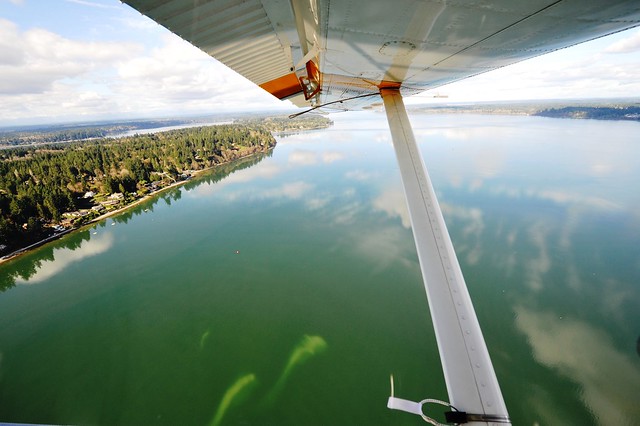 |
View this month's report |
What do warm waters mean for Puget Sound?
Puget Sound is running hot. The Blob that made national headlines last summer continues to lurk deep in the Pacific Ocean and remnants are still being felt here. Puget Sound is a small player in our global climate, but we are feeling the impacts. |
| We caught a nice view of downtown Seattle on this clear blue day. |
We also observed these conditions boosting less desirable species that do not support fish, like jellyfish and macro-algae. We're curious to see how this unusual pattern unfolds in the coming summer, and we'll keep you included in what we see.
High flows dilute salt concentrations
Another result of this warm, wet March is that salinity in Puget Sound is notably lower than usual for this time of year. Luckily, our marine wildlife are able to adjust to fluctuating levels of salt dissolved in the Sound. Some species will even move to a different depth to find salinity levels that are more comfortable for them.The view from the air
We saw more patches of jellyfish hanging out in the inlets of Puget Sound on this flight. Brown-red phytoplankton blooms are going strong in Hood Canal and Henderson Inlet, and picking up in many other areas around the Sound. |
| Scroll through to see images from the flight, or follow the link to Flickr to view the entire album. |
Many places showed long stretches of suspended sediments along the shoreline, which could be a sign of shore erosion.
 |
| Meet this Critter of the Month, the cactus worm, and many others in our special Eyes Under Puget Sound feature. |
Feature: Critter of the Month
Our benthic taxonomists have been sharing their discoveries from the bottom of Puget Sound by bringing us Benthic Critter of the Month blogs. These posts are part of Eyes Under Puget Sound for our Marine Sediment Monitoring Program.These fun species profiles will give you a peek into the life of Puget Sound’s least-known inhabitants. See the feature in this month's Eyes Over Puget Sound report and read the blogs to learn more.

No comments:
Post a Comment